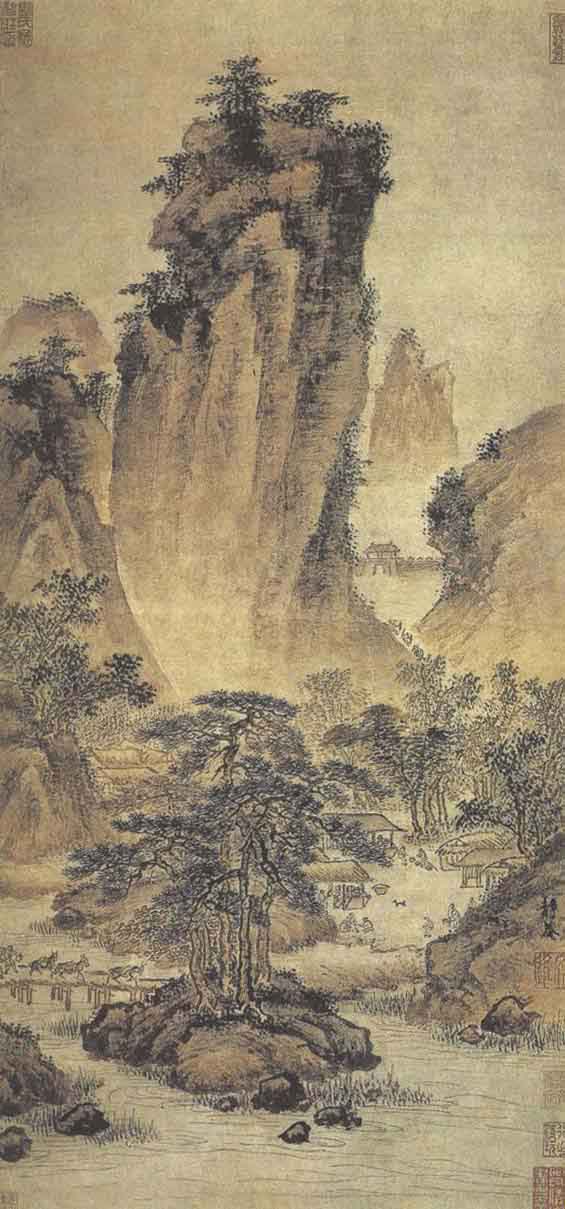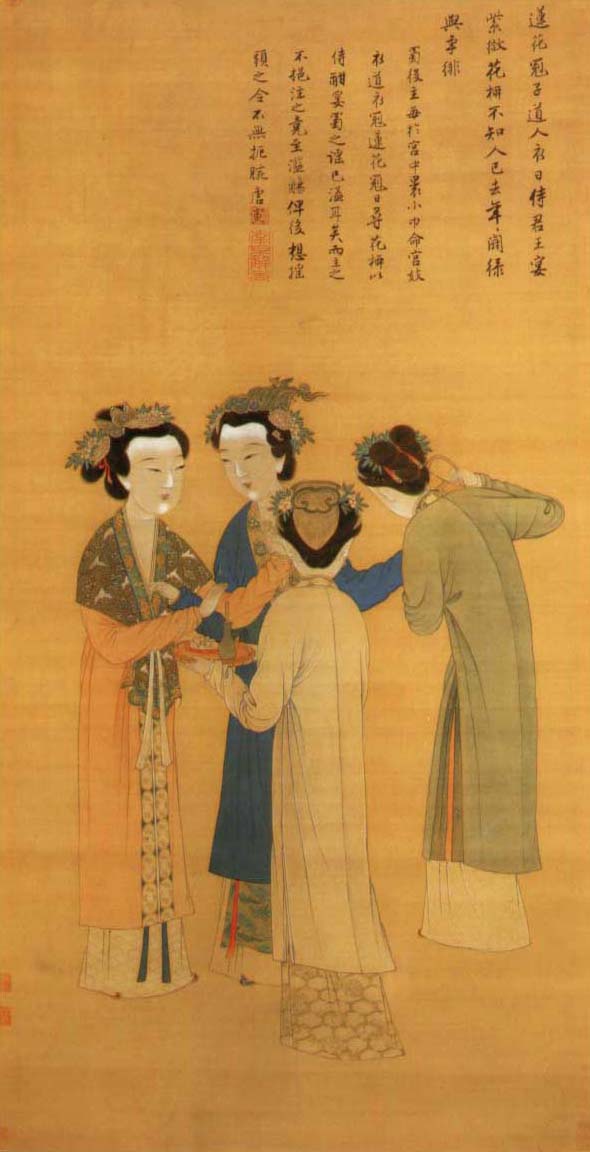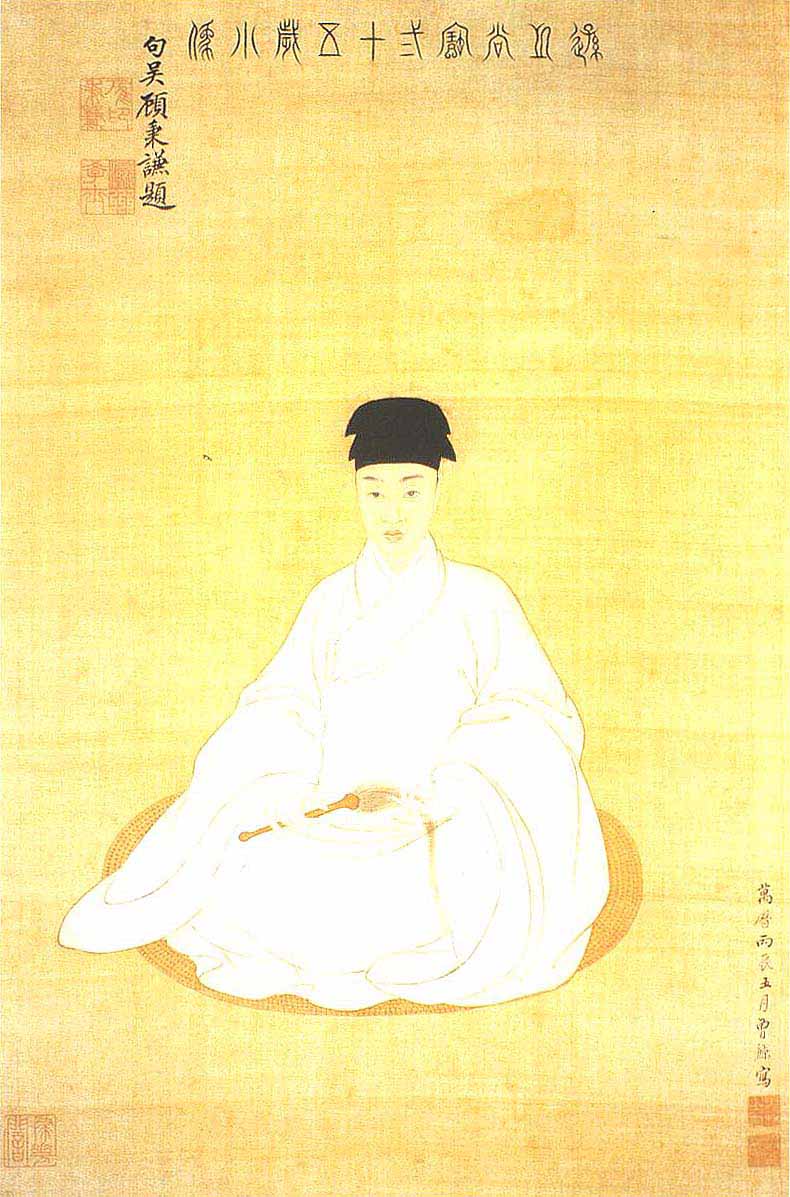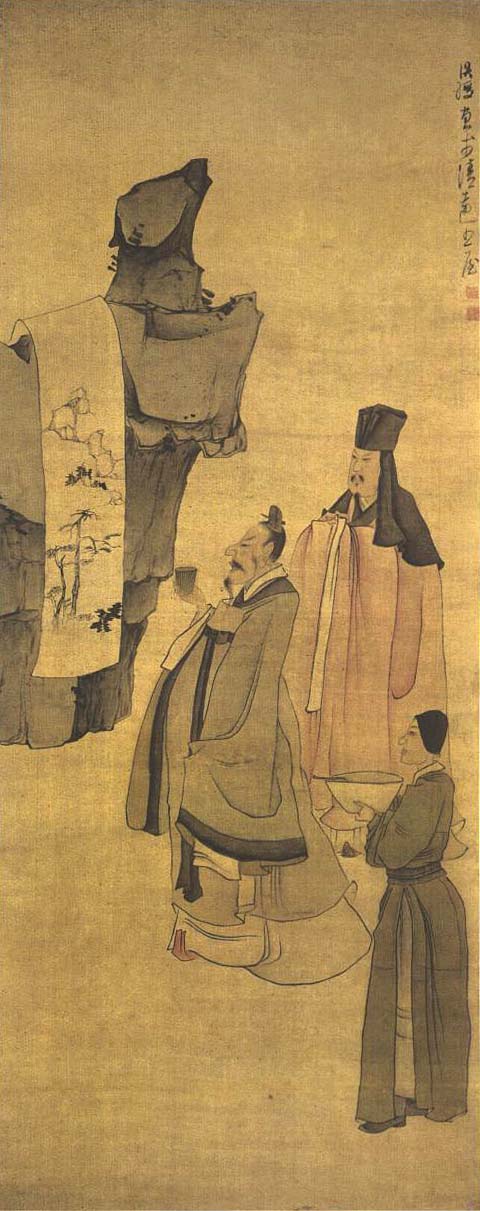|
| |

|

VII.
Ming Dynasty |
|
Emperor Taizu of the Ming Dynasty Zhu Yuanzhang came across as an extremely clever, capable, and cold-blooded ruler who took care of every single thing personally. There are few such as the Ming Dynasty in Chinese history that profoundly influenced by the personality of the founder. Emperor Taizu established imperial guards Jinyiwei, a secret police that served the emperors of the Ming dynasty to arrest, interrogate and punish anyone, and took direct responsibility of it. To prevent any attempt to rebel, he executed more than 100,000 people in three political criminal cases. Emperor Taizu was born poor, and before taking control of China, he had been engaged in many industries which looked not so noble in his contemporaries' eyes, therefore after he became an emperor, he had a lot of taboos to be respected. For this reason he initiated many literary inquisitions (official persecution of intellectuals for their writings), making everyone feel insecure and declined to express their opinions. In Ming Dynasty, the imperial examinations were restored, but the standards became Eight-part Essay (or eight-legged essay, a kind of stereotyped writing specially written to pass the imperial examinations); from then on, the preparation for the imperial examinations had parted company with the spiritual life of intellectuals. The restoration of Han Chinese ruling in China became a nightmare to literati and scholars. |

|
|
Setting Tang Dynasty as a model, the emperors of Ming Dynasty restored the imperial painting academy, which recruited so many artists that the number of court painters during the Xuande, Chenghua and Hongzhi periods had exceeded the total number in Song and Yuan Dynasties. However, because of the paradigm that fettered academic thinking and strangled new voices, especially in the early Ming Dynasty, painters could only completely obey the court to protect themselves, causing the imperial painting academy lost its status as the cultural and art center. In the reign of Emperor Xuanzong (Zhu Zhanji), the academy reached a relative peak. Emperor Xuanzong not only loved painting but also painted himself, and left works behind like "Playing with Ape" and "Stone and Mouse". He was very fond of a court painter called Bian Jingzhao, who inherited the meticulous style with heavy color from the imperial painting academy of Southern Song Dynasty. With accurate modeling, gorgeous color, and conservative style, Bian Jingzhao was considered as one of the most talented artists at that time. During the reign of Emperor Xuanzong, another brilliant court painter proffered his painting "Fishing Alone on A Autumn River" to Emperor Xuanzong, but didn't expect it offended a taboo. The fisher in the painting dressed in red, while in the Ming Dynasty only officials could dress in red when they went to court, therefore, the painter was expelled from the imperial painting academy. The painter's name is Dai Jin.
Dai Jin's ancestral home was Hangzhou. After being expelled from the academy, he had once made a living in Beijing by selling his paintings, and then, in his fifties, Dai Jin returned to Hangzhou selling paintings and teaching there. He inherited the landscape tradition of Guo Xi, Li Tang, Ma Yuan, and Xia Gui. From his quite a few existing works we can find the trace of imperial-court style, as well as the unique style he created which is more relaxed and free. Dai Jin was so influential in Hangzhou that a group of enthusiasts gathered around him gradually, and formed a loose alliance of painters known as the Zhe School. In the early Ming Dynasty, Zhe School was the mainstream with many followers, while Wu Wei was the other outstanding representative of it. Wu Wei used to serve for the court as well, but being different with Dai Jin, Wu Wei had been summoned to the palace for three times; however, his nature was too free to stand the chains in the palace, then he finally left Beijing and went to the south. There are two faces of Wu Wei's painting: one is rough brush ink painting with bold brushstrokes, the other is fine brush line-drawing painting with thin and simple brushstroke. Both Dai Jin and Wu Wei were weighty artists that they basically determined the trend of the art world during the Chenghong years; they made the big-scale landscape painting with rough brushstrokes popular; however, in the late period, the followers of Zhe School only pursue the superficial rough and thus, the Zhe School gradually declined. At the end of the Ming Dynasty, Lan Ying was only excellent painter of the Zhe School that remained.
|
|

|
In the middle of the Ming Dynasty, Suzhou (Wu county) in the Jiangnan area was the center of textile industry, where the business was prospered and the people were rich. Literati and intellectuals also assembled there, sightseeing, drinking, writing poem, and painting to entertain each other. In this period a painting school which followed the literati painting tradition emerged in Suzhou, known as the Wu School. The most famous painters in this school were Shen Zhou, Wen Zhengming, Tang Ying and Qiu Ying, the so-called "Four Masters in Wu School".
Shen Zhou was born in a wealthy scholar family and his great-grandfather was a friend of Wang Meng. The family's wealth freed Shen Zhou from obligatory careers as Ming officials, allowing him to devote his entire life to artwork and socializing. |
|
He was proficient in appreciation of art, and possessed a large collection of paintings which he and his scholar-painter colleagues used as models. In his early years he learned landscape painting from Wang Meng; in the middle age he studied from Huang Gongwang and the other painters in the Song Dynasty; in his later years, he studied Wu Zhen. Before forty most of his paintings were small scenery; after forty he started to paint large-scale landscape; when he created the "Mountains in Autumn" at eighty-one, he attained perfection in skills. Shen Zhou and his student Wen Zhengming are usually considered as the leading figures of Wu School. Wen Zhengming inherited the tradition of Dong Yuan, Zhao Mengfu, Wang Meng, Wu Zhen and so on. With fine-brush techniques and a steady and gentle atmosphere, Wen Zhengming's landscape painting revealed his characteristics as a literati in Jiangnan area, as well as his living environment. Wen had attend the imperial examinations for ten times, and failed for ten times. When he was fifty-four, he was finally recommended to take an official position in the capital. Four years later he was tired of officialdom, resigned and returned his hometown. His studio became an informal local art academy, from which a lot of outstanding students were cultivated; his great granddaughter was a good painter as well. Later in life Wen Zhengming was superb in wood, bamboo and stone painting; the twisted and gnarled trees reflects the painter's characteristics which was stronger as growing older.
The other two of the "Four Masters in Wu School" are Tang Yin and Qiu Ying, whose manners are quite different from Shen and Wen. First of all, their financial condition was not as good as the previous two, thus painting was not only their interest, but also their source of livelihood; secondly their identity of professional painter unavoidably brought them a habit of artisan, and brought about conflict between the styles of literati painting and court painting in their works; thirdly, the two artists were both Zhou Chen's students, while their technique was originated from Li Tang, Liu Songnian, and influenced by Shen Zhou, Wen Zhengming and other painters in the Northern Song Dynasty and Yuan Dynasty. Comparing to Shen and Wen, Tang and Qiu's painting was more gorgeous and delicate. Tang Yin, courtesy name Bohu, was put in jail for a cheating scandal in the imperial examinations when he was thirty, and was banned from a distinguished civil service career forever. After that he became a frequent visitor to brothels and taverns in Suzhou. In his old age, he often wandered around the Buddhist temple and Zen temple outside Suzhou city. Tang Yin's brushstroke is slender, with two different features of court style and literati charm in his landscape painting. For figure painting, "Ladies in Royal Court" is his representative work, in which he used a coloring skill called "three white" to dye the forehead, nose and cheeks of the court ladies white to show their tender and fragile feminine features. Qiu Ying was born in a poor family and used to be a lacquerer in his early years. After he had learned how to paint, he became a superb imitator, and was often hired to imitate ancient masters' works. The well-known wealthy collector Xiang Yuanbian was one of his patrons. |
|
For literati painting in the late Ming Dynasty, the man of the highest position should be the scholar painter Dong Qichang. As a Minister of Rites, Dong Qichang was the leader of "Huating Landscape School", and had a high reputation in the art world. He brought forward a theory of the Southern School and the Northern School (according to painting style rather than geographic areas), considering that Wang Wei in the Tang Dynasty was the founder of the Southern School, all the great literati painters belonged to the Southern School, and he himself was an orthodox Southern School, while the Northern School in his definition, included all the court painters. He called for the conserving, reviving and creating of the Southern tradition, when he was also a practitioner of this idea. There are many similarities between his works and ancient masterpiece. Due to the excessive pursuit of the ancient manner, his compositions were often repeated, with a sense of form and conventional representation, which is nevertheless elegant. Although his opinion of strongly favoring the Southern school while dismissing the Northern school was not always correct, its influence on later critics had lasted for three centuries.
|

|
|
In the late period of the Ming, another China's inherent dynastic cycle reached its tail's end; the bureaucratic system could no longer support the country's operation, while one after another emperor who neglect his duties sped up the whole process; however, for cultural activities, since the autocratic system in the early and mid period of Ming Dynasty was relatively loosen, a group of audacious painters emerged.
"White Sun and Green Vine School" refers to two representative flower-and-bird painters of freehand brushwork, Chen Chun and Xu Wei. Chen Chun (whose sobriquet is White Sun Hermit) was a student of Wen Zhengming. With precise brushstroke and light inking, his painting was highly appreciated by his contemporary literati and scholars. While another painter Xu Wei (whose sobriquet is Green Vine Lay Buddhist), made fundamental change to the freehand brushwork flower-and-bird painting. Despite his posthumous recognition, Xu was unsuccessful in life and manifestly mentally ill. After murdering his wife and being jailed for seven years because of it, Xu ended his life in poverty and frustration. However, the other side of the coin was his success in art. His painting brushstroke is as free as cursive writing; he boldly broke the limitation of appearance of things, and created images in somewhere between similarity and dissimilarity; he dropped the leisurely and graceful state that previous literati painters usually liked to express, but to paint from one's strong inner feelings and sentiments; he extended the full exertion of brush and ink's expression on the raw Xuan paper to speak his blazing and fevered feelings, so his works are full of impressive artistic appeal. One of his masterpieces, the "Ink Grape", has fully demonstrated his ability of expressing feelings through things. Xu Wei had a great influence on later painters like Zhu Da, Shi Tao in the Qing Dynasty, and Qi Baishi in the modern China. |
|

|
Among the figure painters at the end of the Ming Dynasty, Chen Hongshou was the most outstanding one. His figure painting swept away the gentle and lovely formula which was inherited by followers of Zhe School and Wu School, and brought fresh air into the art world by presenting exaggerated and funny images. He often put his figures in a classical Jiangnan landscaped garden, and made their faces longer than normal, which is easily recognizable. Technically, he liked to use long and cursive lines, giving an elegant and beautiful impression to viewers. And in addition to ink painter, Chen was an excellent woodprint illustrator. In the Ming Dynasty, novels and dramas became popular among the citizens, and as a result, the demand for illustration used in novel and drama books was increased. Qiu Ying had created many illustrations, while Chen Hongshou's "Album of Water Margin" and "The Romance of West Chamber" were more successful and became a model of early Chinese illustration painting. These lively images had so deeply lodged themselves in the public mind, that they even promoted the development of Chinese woodcut thereafter. Another painter at the end of the Ming Dynasty, Cui Zizhong, was good at woodcut illustration as well. His ink painting absorbed the style of folk prints, which can be found in his representative work "Grooming An Elephant". The two eminent figure-painting artists - Chen Hongshou and Cui Zizhong, were called "Chen in South and Cui in North".
|
|
At the end of the Ming Dynasty, folk portraits had been well developed and their overall characteristic was neat and realistic. We can find such feature in Zeng Jing's "Portrait of Zhang Qingzi" and "Portrait of Wang Shiming", which depicted and revealed the person's facial features delicately. The perspective techniques used in these portraits seems to imply that the western painting techniques brought by Matteo Ricci and his missionary colleagues had been spread among Chinese professional artists at that time.
Corresponding to Wang Yangming's theory "nothing exists beyond the mind", literati painters in the Ming Dynasty further made painting a carrier of personal feelings and characteristics. In painting genres, there were a lot of art schools which differentiated themselves from each other in region or in style, especial the Zhe school of the early Ming and Wu school of the mid Ming. Breakthrough was made in both flower-and-bird painting and figure painting. For the whole picture, the wide and profound vision in Song and Yuan dynasties had gradually disappeared, and was replaced by a more approachable and easily-imitated style. The Ming government was no longer a reliable patron of culture and art, however, among the people there emerged important collectors such Xiang Yuanbian and Liang Qingbiao. As the background, China in the Ming Dynasty was more content with a close-door policy. While many throne successors of the Ming Dynasty showed their talents and temperaments except for running a country, the bureaucratic group who ruled the country was helpless when they faced many important issues. On the other hand, a real international competition initiated on the other side of the ocean appeared in China.
|
| |
|
|
|
|
明朝
明太祖朱元璋给人的印象是精明强干、事必躬亲和冷酷无情,中国历史上很少有像明朝这样深受开国者个人个性影响的朝代。明太祖设立特务机构锦衣卫并亲自掌控,为防范企图谋反者,他在三件政治罪案中连带处死了十多万人。明太祖出身贫苦,当皇帝之前从事过不少时人看来并非高贵的行业,因此掌政之后忌讳也特别多,为此他大兴文字狱,造成人人自危,不敢开口的局面。明朝恢复了科举,但取士的标准变成了八股文,从此科举考试的学习备考同知识分子的精神生活开始分道扬镳。汉人对中国统治的恢复变成了文人士大夫们的噩梦。
明朝皇帝以唐代为楷模恢复了御用画院,宣德、成化、弘治年间画院画家人数众多,甚至超过宋元,但是因为文化制度上的专制,尤其是明初文网对艺术新声的扼杀,使得画院画家只能完全顺从朝廷的需要,以求自保。此举使画院丧失了文化艺术中心的地位。明宣宗朱瞻基在位期间,画院相对达到鼎盛,宣宗热爱绘画,本人也擅长画画,作品有《戏猿图》、《鼠石图》等。边景昭是明宣宗十分喜爱的一位宫廷画家,他的画风继承南宋院体的工笔重彩,造型准确,色彩浓丽,风格保守,被认为是当时最有才华的画家之一。同样是明宣宗在位的宣德年间,另一位才华横溢的宫廷画家向宣宗进献《秋江独钓图》,没想到此举犯了忌讳,因为画中渔夫身着红衣,而明朝只有官员朝会时才能穿红色,于是这位画家被逐出了画院。这位宫廷画家的名字叫戴进。
戴进祖籍杭州,被驱逐出画院后他曾一度在京靠卖画谋生,五十多岁回到杭州,卖画授课。他的山水画师承郭熙、李唐、马远、夏圭,存世作品较多,风格上有院体画风的痕迹,但同时也创造出自己独特的一面,秀逸而酣畅,比纯粹的院体画更松散和自由。戴进的绘画在杭州相当有影响力,身边逐渐聚集了一群同好,形成一个松散的画家联盟,史称浙派。明朝初期浙派是画坛主流,追随者非常多。浙派另一位代表人物吴伟也曾任职于宫廷,与戴进不同,吴伟曾三次被召进京,声望显赫,但他本性放任,不愿受羁绊,终于离京南下。吴伟的绘画有粗笔水墨和细笔白描两种面貌,水墨用笔豪放,白描线条简洁。戴、吴两家影响很大,左右了成弘年间的画坛趋势,使水墨粗简的大幅山水人物画成为一时风尚。浙派发展到后期,追随者只从表面追求粗简草率,因此逐渐没落,明末浙派传人中的优秀者只有蓝瑛一人。
明朝中期,江南苏州是纺织业中心,商业发达,社会富庶,文人墨客纷纷聚居于此,在一起游山玩水,喝酒吟诗,以画相娱。这个时期苏州兴起了一个继承文人画传统的绘画派别,史称吴派,他们之中以沈周、文徵明、唐寅、仇英最有名,被称为吴门四家。
沈周出身于书香门第,曾祖父是王蒙的好友。他没有做官的意愿,好在家境富裕,足以供他一生按自己的爱好生活和交友。沈周精通鉴赏,富于收藏,他的山水画早期学王蒙,中年学黄公望和宋代诸家,晚年学吴镇。他四十岁之前多画小景,四十岁之后才开始画大幅,八十一岁画《烟江叠嶂图》时,技法已经炉火纯青。沈周是十五世纪吴门画派的领军人物。另一位吴派代表人物文徵明,画法远承董源,宗法赵孟頫、王蒙和吴镇等人,也受沈周的影响。他的山水画平和恬静,秀逸含蓄,以细笔山水居多,体现出江南文人的性格特点和生活环境。文徵明曾十次参加科举落第,五十四岁时才受荐进京当官,很快又厌倦了官场,四年后乞归还乡。他的书斋成为当地的非正式画院,出了不少成就杰出的学生,他的玄孙女文俶也是一名出色的画家。文徵明晚年的枯木竹石图相当老辣,扭曲多瘤的老树体现出画家本人愈老弥坚的品格。
吴门四家中另外两位,唐寅和仇英,他们的风格与沈、文两位有所不同。首先他们家境不如沈、文二人宽裕,绘画不仅是他们的爱好,也是他们的谋生来源;其次,职业画家的身份让他们不能完全免除匠人的习气,文人画和画院派风格在他们的作品中时有冲突;三则二人都是周臣的学生,画法同样渊源于李唐、刘松年,又兼受沈周、文徵明和北宋、元人的影响。与沈、文二人相比,唐、仇的绘画更趋华丽细腻。唐寅,号伯虎,三十岁时因一场科举考试舞弊丑闻被牵连入狱,并终生取消功名,从此他就成为苏州青楼酒肆的常客,晚年时常游走于苏州城外的寺庙禅院。他的山水画用笔较为细秀,有院体风貌和文人意趣两种不同的面貌。《梦蜀宫妓图》是他人物画的代表作,在设色上采用“三白”设色法,就是用白色敷染额头、鼻子和脸颊,显出宫妓弱不禁风的情态。仇英出身微寒,早先是一名漆工,后来才学的绘画。他是一个技艺高超的模仿者,常受雇模仿古代大师的作品。明代大藏家项元汴是仇英的资助者之一。
文人画发展到明代后期,地位最高的莫过于身为学者画家的董其昌。他官至礼部尚书,在画坛上具有极高声望,是华亭山水画派的首领。董其昌提出画作之中的南北宗理论,认为唐代王维是南宗的创始人物,所有伟大的文人画家都属于南宗,并自诩为南宗正统,而北宗则被他定义为所有的宫廷和画院画师。他提倡对南宗传统应当保存、复兴和创新,本人也是这一理念的实践者。他的画作有很多摹古的地方,由于过度追求古人笔墨,他的构图往往雷同,形式感和程式化意味较重,整体风格偏于秀媚。他的崇南贬北的观点虽不乏偏见,却影响中国艺术批评长达三个世纪。
明代晚期,中国固有的王朝循环模式在这一个朝代又接近了它的尾声,上层官僚体系不再能支持国家的运转,一个又一个玩忽职守的皇帝更加速了这个过程,然而对文化活动来说,这也代表明朝前中期的专制束缚相对松弛了一些,出现了一批敢于大胆创新的画家。
白阳青藤派画家陈淳和徐渭是明末写意花鸟画家的代表人物。陈淳(白阳山人)是文徽明的学生,他的作品用笔洗练,淡墨淋漓,深受当时文人士大夫的赞赏。而对写意花鸟画作出根本变革的则是号称青藤居士的徐渭。徐渭一生郁郁不得志,一度行为举动有异常人,曾因杀妻而入狱7年,晚年境遇更是潦倒。然而人生上的失意却铸就了他在书画中的得意,徐渭的绘画笔法有如狂草般不拘一格,他大胆突破物象形态的局限,画出物象在似与不似之间,他一反之前明代画家的闲雅精致,以内心强烈的个人情感来画画,他在生宣上的笔墨表现力气势磅礴,直抒炽烈激愤的情怀,因此他的作品也具有震撼人心的艺术感染力。他的代表作之一《墨葡萄图》充分展现了他这种借物抒怀的能力。徐渭的画风对后人影响很大,如清代的朱耷、石涛,现代的齐白石,都曾受惠于他的创新。
明末人物画家中,陈洪绶是成就最突出的一位。他的人物画一扫浙、吴两派继承者程式化的柔媚绮靡,人物形象夸张而富有趣味性,给当时的画坛注入一股清新之风。他常把人物画在古雅的江南园林中,人物的脸画得比正常人的要长,具有很强的可辨识性。技法上他爱用长而圆转的线条,给人以优美典雅的印象。除了水墨,陈洪绶在木刻插画上也有很高造诣。在明朝,小说、戏剧开始在市民中流行,用于小说、戏剧书籍的插画需求量也随之增大。仇英就创作过许多插画,而陈洪绶的《水浒叶子》、《西厢记》更是早期中国插图绘画的典范,这些生动活泼的形象在民间深入人心,也推动了中国木刻版画的发展。明末另一位人物画家崔子忠也擅长木刻插画,他的水墨吸收了民间版画的风格,代表作《扫象图轴》。崔子忠与陈洪绶齐名,并称“南陈北崔”。
明末民间肖像画已十分发达,它们的整体特征是工整写实,如其中代表画家曾鲸所绘的《张卿子像》、《王时敏像》,描绘对象微妙的个人面部特征一一展露无遗。这些肖像画表现出来的透视手法似乎在暗示,由利玛窦和他的传教士同事们带来的西方绘画艺术已经在中国职业画家们手中开始流传。
与王阳明的“心外无物”相对应的是,明朝文人画家们进一步使绘画成为个人情感和品性的载体。在绘画流派上,涌现出众多以地区或绘画风格相区别的派系,尤以初期的浙派和中期的吴派为代表。写意花鸟和人物画都有突破前朝之处。就整体画风而言,宋元画家开阔、深邃的视野已逐渐消失,变成一种更平易近人且易于模仿的风格。明代朝廷不再是文化艺术的可靠庇护人,民间则出现了项元汴、梁清标这样的大藏家。作为绘画艺术的背景,明朝时期的中国更满足于闭关自守,许多皇位继承者都显示出治国之外的才华和性情,而掌权的官僚集团却对许多重要问题都束手无策。另一方面,发起于海洋另一端的真正的国际竞争开始出现在中国。
|
|
<-
Previous Page |
|
|
|
Next
Page -> |
|
|